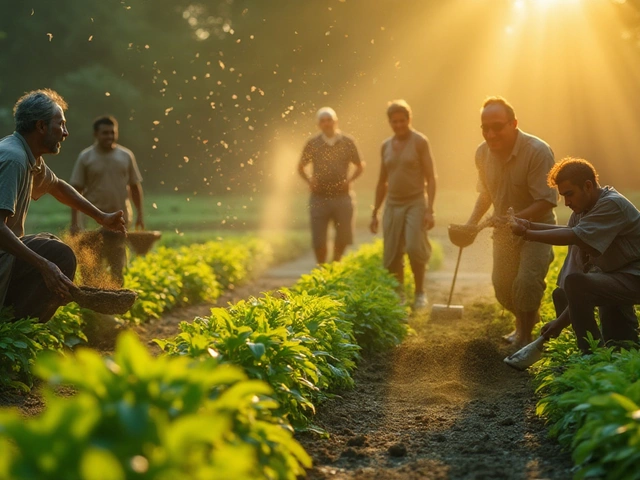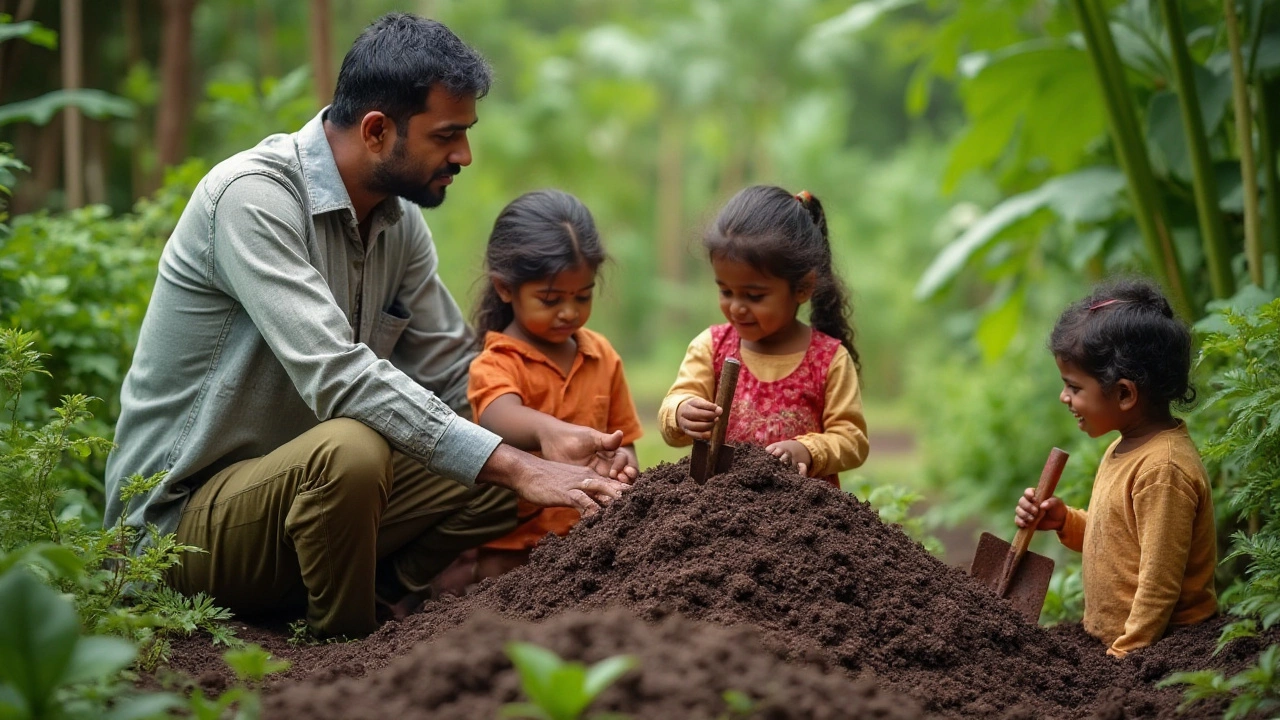Composting Tips for Indian Gardens: Turn Waste into Rich Soil
Ever wonder why your garden looks a bit tired even after you water it? The secret might be what’s missing in the soil – organic matter. Composting turns kitchen scraps and garden trimmings into black gold that feeds plants, improves texture, and keeps water where it belongs. Below you’ll find straightforward tips you can start today, no fancy equipment required.
Why Compost? A Quick Reality Check
Compost isn’t just about recycling waste; it’s about giving plants food they understand. In Indian soils, especially the heavy, clay‑rich types common in many regions, adding compost loosens the ground, boosts drainage, and supplies microbes that break down nutrients. The result is stronger roots, fewer pests, and less need for chemical fertilizers. Plus, you cut down on the amount of trash you send to landfills – a win for the planet.
Easy Composting Methods for Indian Gardens
1. Choose a Simple Bin. A wooden or plastic box with a lid works fine. Drill a few holes on the sides for airflow. If space is tight, a 3‑ft tall, 2‑ft wide bin fits on a balcony or in a backyard corner.
2. Layer Like a Lasagna. Start with a thin layer of dry material – shredded newspaper, cardboard, or dry leaves – about 2 inches. This creates a breathable base. Then add a wet layer – vegetable peels, fruit waste, tea bags – and repeat. Aim for a 1:1 ratio of dry to wet material; too wet and it will stink, too dry and it won’t break down.
3. Keep It Moist, Not Soaked. Think of a wrung‑out sponge. If the pile feels dry, spray a little water. If it’s soggy, add more dry carbon material. Regularly turning the pile with a garden fork every week helps introduce oxygen and speeds up decomposition.
4. Use Local Materials. In many Indian regions, tea leaves, coconut husk, and jaggery waste are abundant. These add nutrients and help balance the carbon‑to‑nitrogen ratio. Avoid adding meat, dairy, or oily foods – they attract pests and slow the process.
5. Harvest at the Right Time. After 2–4 months, the compost should look dark, crumbly, and smell earthy. Sift out any large pieces and let them decompose in the bin again. Use the finished compost as a top‑dressing around flower beds, vegetable rows, or mix it into potting mixes.
6. Fast‑Track with a Vermicompost Bin. If you have limited space, consider a worm bin. Red wigglers love kitchen scraps and produce nutrient‑dense castings in weeks. Just keep the bin in a shaded spot, feed it regularly, and harvest the castings for your indoor plants.
7. Monitor Common Mistakes. Smelly piles usually mean too much moisture or not enough air. Piles that stay dry won’t break down. Also, watch out for pests – a lid and proper layering keep rodents away.
Starting a compost pile may feel like a new habit, but once you get the rhythm, it becomes second nature. The next time you toss a banana peel, think of the healthy soil it will become.
Remember, composting is a low‑cost, high‑reward practice that fits any Indian garden, whether it’s a city balcony or a rural field. Follow these tips, stay patient, and watch your plants thrive like never before.
What Not to Put in Compost: Essential Guide for Safe and Healthy Homemade Composting
If you’re eager to make nutrient-rich homemade compost, you need to know there are a few things that just don’t belong in the pile. This practical guide dives deep into what you absolutely shouldn't add, and why skipping certain scraps makes your compost safer and better for your garden. We’ll unpack surprising facts and tips you won’t find on the back of a fertilizer bag. Make sure you create compost that’s both eco-friendly and trouble-free. Here’s what every home composter needs to know.
Mastering Organic Composting with Effective Activators
Composting is an essential practice for anyone looking to improve soil health and reduce waste sustainably. Compost activators play a crucial role in supercharging the decomposition process by providing necessary nutrients and beneficial microbes. Learn how these activators enhance composting efficiency, the different types available, and how to use them effectively. This guide will offer tips on selecting the best activator for your needs and integrating it into your compost system seamlessly.
About
Gardening, Sustainable Gardening
Latest Posts


How to Waterproof Your Terrace Roof: Essential Tips
By Alden Thorne Apr 11, 2025

Best Topography for Growing Rice: Key Insights
By Alden Thorne Feb 21, 2025

Which Ethnicity Consumes the Most Rice Daily?
By Alden Thorne Mar 16, 2025


